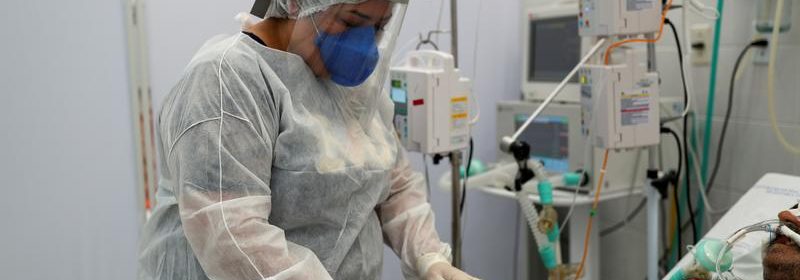Younger Brazilians increasingly hit by COVID-19, study finds

BRASILIA (Reuters) – Younger Brazilians are increasingly being affected by COVID-19, with those in their 20s showing the greatest increase in deaths so far this year, according to a report published by government biomedical institute Fiocruz on Friday.
It found that the number of COVID-19 deaths among people between the ages of 20 and 29 jumped more than 1,000% between the start of this year – before Brazil’s vaccination campaign began – and the first half of April.
Deaths among those 30 to 39 rose 819%, while fatalities among the 40 to 49-year-old group jumped 933%, the study found.
Brazil has been badly hit by the pandemic this year, with a slow vaccine rollout, patchy nationwide restrictions and a highly contagious new virus variant known as the P1 driving new infections.
Fiocruz said the rise in younger deaths could possibly be explained by a relaxing of restrictions, or a general “exhaustion of confinement.”
“The need to return to face-to-face work or search for ways of subsistence, given the deepening economic crisis and unemployment rates,” may also be a factor, it said.
Several countries, including Canada and the United States, where new more transmissible virus variants are widely circulating, have reported that younger people are bearing the brunt of COVID-19 hospitalizations, unlike early in the pandemic when the elderly were hardest hit.
According to the study, the average age of hospitalized patients was now about 58, compared with 62 at the start of the year. The average age of those who died from the disease had dropped to about 65, versus 72 in January, it said.
The study showed that the situation in Brazil remains grave. Fourteen states and the Federal District have intensive care unite occupancy rates above 90%, while seven states are at levels of between 80% and 89%, it found.
Source: Read Full Article
